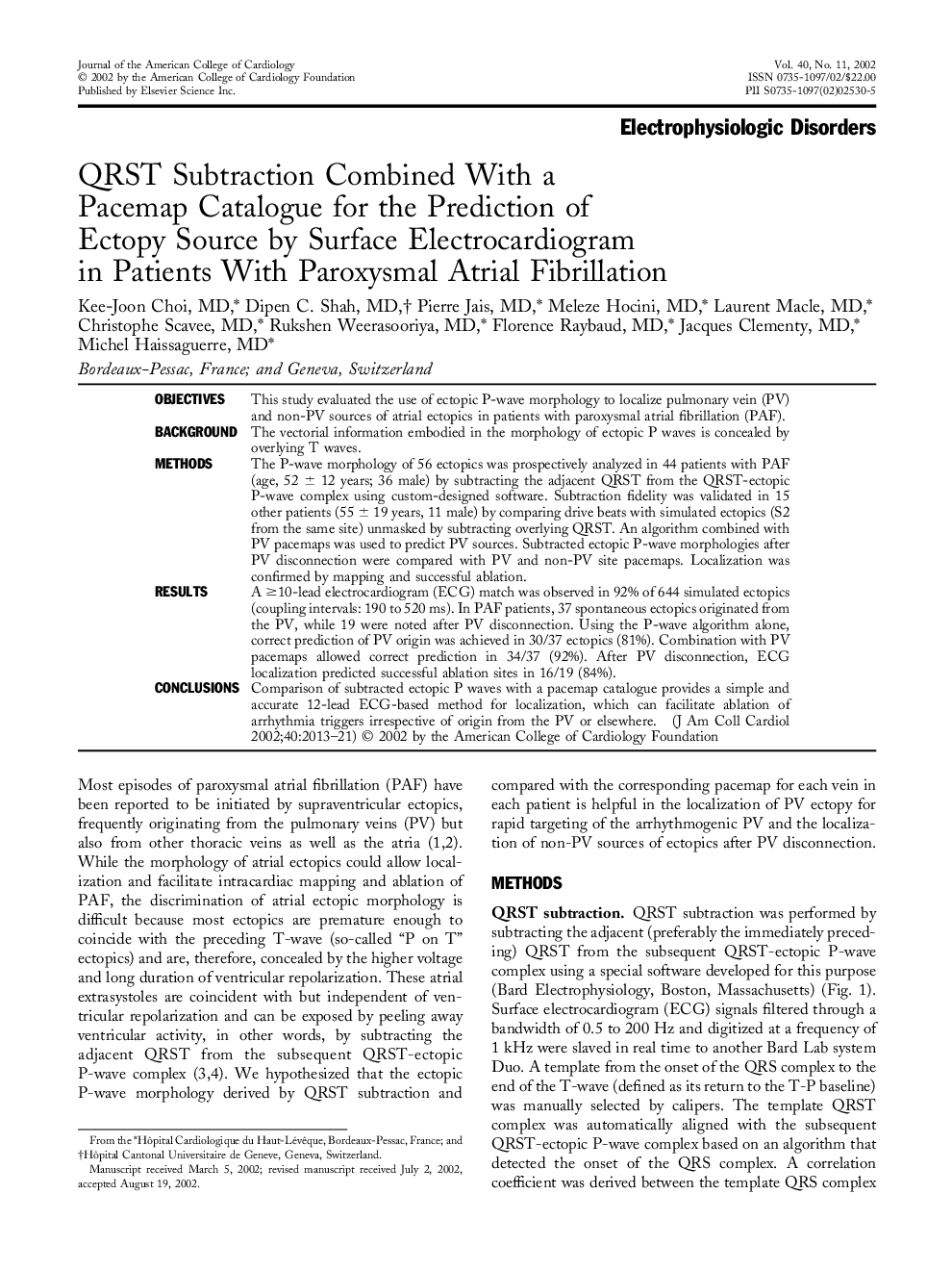| Article ID | Journal | Published Year | Pages | File Type |
|---|---|---|---|---|
| 2955860 | Journal of the American College of Cardiology | 2013 | 9 Pages |
ObjectivesThis study evaluated the use of ectopic P-wave morphology to localize pulmonary vein (PV) and non-PV sources of atrial ectopics in patients with paroxysmal atrial fibrillation (PAF).BackgroundThe vectorial information embodied in the morphology of ectopic P waves is concealed by overlying T waves.MethodsThe P-wave morphology of 56 ectopics was prospectively analyzed in 44 patients with PAF (age, 52 ± 12 years; 36 male) by subtracting the adjacent QRST from the QRST-ectopic P-wave complex using custom-designed software. Subtraction fidelity was validated in 15 other patients (55 ± 19 years, 11 male) by comparing drive beats with simulated ectopics (S2 from the same site) unmasked by subtracting overlying QRST. An algorithm combined with PV pacemaps was used to predict PV sources. Subtracted ectopic P-wave morphologies after PV disconnection were compared with PV and non-PV site pacemaps. Localization was confirmed by mapping and successful ablation.ResultsA ≥10-lead electrocardiogram (ECG) match was observed in 92% of 644 simulated ectopics (coupling intervals: 190 to 520 ms). In PAF patients, 37 spontaneous ectopics originated from the PV, while 19 were noted after PV disconnection. Using the P-wave algorithm alone, correct prediction of PV origin was achieved in 30/37 ectopics (81%). Combination with PV pacemaps allowed correct prediction in 34/37 (92%). After PV disconnection, ECG localization predicted successful ablation sites in 16/19 (84%).ConclusionsComparison of subtracted ectopic P waves with a pacemap catalogue provides a simple and accurate 12-lead ECG-based method for localization, which can facilitate ablation of arrhythmia triggers irrespective of origin from the PV or elsewhere.
